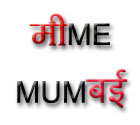King Edward Memorial KEM Hospital was founded in 1926 along with the Seth Gordhandas Sunderdas Medical College (GSMC). 22nd January is celebrated as Foundation Day of K.E.M. hospital. It was erected to the memory of Edward VII King at a total cost of Rs 43,86,000 by the Municipal Corporation of the city of Bombay. The hospital plays a bigger role in providing the best medical treatments at a very nominal cost for underprivileged sections of society. People from all over the country visit KEM for treatments.
The following were some of the sources of funds collected in the form of donations to build the hospital:
The site is given by the Government of Bombay
Contribution from the Government of Bombay – Rs 5,00,000
King Edward VII memorial association Rs 7,00,000
Sir Currimbhoy Ebrahim Entertainment fund Rs 1,20,000
Mr. Purshotamdas Mangaldas Nathubhai Rs 1,00,000
Dr. Habib Ismail Janmahomed Rs 30,000
Below are the various departments located on various floors in the New Building of K.E.M.:
- 1st floor – Dept of Clinical Pharmacolgy
- 2nd floor – Dept of Pharmacology and Therapeutics & Gastroenterology Surgery
- 3rd floor – Joint Replacement and Spine OT (JROSOT) Dept of Orthopedic & Ward 37
- 4th floor – Female Ortho ward 29 & JROCOT
- 5th floor – Dept of Microbiology
- 6th floor – Pathalogy Lab & Dept of Orthopedics & Ward 26
- 7th floor – National Plasma & Microbiology Labs
- 8th floor – Urology OT and ward
- 9th floor – Gateroenterlogy ward
- 10th floor – Dept of Neonatal Intensive care unit & Hematology Dept
- 11th floor – Dept of Medical Gastroenterology & Hemat Day Care Centre & Private ward 39
- 12th floor – Doctor ward
- 13th floor – National Institute of Immunohematology
Departments of KEM
K.E.M. has as many as 62 departments providing various treatments. Check here the details of departments
OPD & Wards
K.E.M. is mostly crowded since people of all background and many places visit for treatment.
O.P.D timings & Location of various wards for treatment
Seth Gordhandas Sunderdas Medical College (GSMC)
Along with K.E.M. hospital, Seth Gordhandas Sunderdas Medical College (GSMC) was built to provide training to students in undergraduate, postgraduate and super speciality medical courses; in undergraduate and postgraduate physical and occupational therapy;
Masters and PhD courses in various allied specialties. A nursing school is also maintained by these institutions. The college is affiliated with the Maharashtra University of Health Sciences. The college and hospital is the first Indian medical college to be staffed by fully qualified Indian doctors. Being the only college in India with a department of Sexology, it provides basic health care as well as advanced healthcare facilities in all fields of medicine and surgery.
Address:
Acharya Donde Marg, Parel,
Mumbai 400 012. India.
Tel.: 91-22-2410 7000 Fax: 91-22-2414 3435
K.E.M. website
Email: kemwebsite@kem.edu
Milestones of K.E.M. (Info source: Wikipedia)
- The first Indian Medical College of modern medicine to be fully staffed by qualified Indian doctors.
- The first Occupational Therapy School in Asia
- The first Physiotherapy School in Southeast Asia
- The first Plasma Fractionation Unit in Asia
- The first Indian hospital to have an Ayurveda Research Centre in conjunction with an allopathic set-up
- The first Indian Medical College and Hospital that has an indexed medical journal (Journal of Postgraduate Medicine)
- The only Department of Sexology for a billion people
- The first clinical pharmacology ward in the country
- The first dedicated Orthopaedic department in the country
- The first department of Cardio-thoracic Pathology in India
- The first Nutrition Research Unit attached with a physiology department in India
- The first department of cardiovascular and thoracic anesthesia in India
- First specialized epilepsy surgery department in Western India
- First department of interventional electrophysiology in western India
- First dedicated Esophageal Laboratory in the country
- First Intensive Cardiac Care Unit in India
- The first Indian hospital to perform a live donor kidney transplant in India
- The first Indian hospital to perform heart transplant surgery
- The first liver transplant in India (1968)
- The first documented test-tube baby in India
- The first Indian hospital to acquire an ECG machine
- The first mitral commissurotomy in India (1952)
- The first Indian hospital to perform craniofacial surgery
- Pioneering work on the use of diethylcarbamazine in tropical eosinophilia
- Pioneering work on the use of Rauwolfia serpentina in hypertension
- First balloon atrial septostomy procedure in the country
- First balloon dilatation of cor-triatriatum in the world
- First fetal echocardiography-guided interventional therapy in the country
- First transcatheter closure of ASD in Western India
- The first cadaveric temporal bone and micro ear surgery workshops (1976)
- The first Department of Preventive and Social Medicine to start a Mobile Health Unit in India (1964)
- Highest annual processing of blood samples in India (about 36,000/year in 1998, 1999)
- The highest annual collection of blood unit in India (about 30,000/year in 1998, 1999)
- The highest number of blood donation camps held by a single blood bank in India
- Single largest collection in India with a single Blood Bank in a day: 5679 units of blood
- Pioneering work on in-vitro testing of Indian hepatoprotective agents
- First intravenous anesthesia with Thipentone sodium (1940s)
- First hypothermia technique for ASD (1953)
- First All India Conference of Indian Society of Anesthetists (1949)
- The first total spinal technique for controlled hypotension (1954)
- Largest numbers of presidents of Indian Society of Anesthetists from a single Institution (five)
- First cardiac catheterisation in India 1959-60
- Pioneering work on the recreation of reptilian heart vascular pattern in the mammalian heart (1965)
- Pioneering work on the association of tuberculosis with non-specific aortoarteritis (1963)
- First interventional radiological procedures in India 1975
- Discovery of Bombay Blood group Pioneering work on release and grafting of trismus in submucous fibrosis








